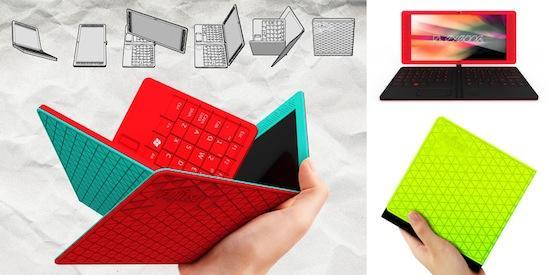
As many of you know, I'm a tablet fiend. On Wednesday's Untethered Podcast, Evan, David (of TmoNews), Joey Lehto and I stumbled upon the subject of tablets and we may have touched on how many tablets I've owned to date. Personal devices alone, I've owned somewhere north of 15 tablets.
Did I mention I love tablets?
To be perfectly honest, I don't even know why. Sure, there's a convenience factor, and I've managed to nail down my reason behind owning and using a tablet on a regular basis – I can hunker down and focus a little better without all of the distractions to be found on a computer. But I probably love tablets a little too much and cannot explain exactly why. I still use my MacBook and whatever cell phone I'm carrying at the time more than any tablet. I guess it's just nice to have an intermediary device, and the thought of the potential of tablets in the not too distant future.
Currently, tablets are a bit underpowered and thus are very limited in functionality. A year or two down the road – obviously with a lot of work and improvement – tablets could replace the need for the home PC for most individuals.
The first thing that needs to change is the form factor. The vast majority of tablets are flat, black, rectangular slabs with very few ports or buttons. Not everyone always needs a physical keyboard, which is ultimately what makes the tablet a tad more flexible and portable than your average laptop. However, the lack of a physical keyboard at any given time is a limiting factor of a tablet. Where is the balance?
ASUS set out to solve this problem by going back to the roots of the original tablets. Their extremely popular Transformer and Transformer Prime tablets have a separate keyboard dock attachment that can be purchased separately. With the ability to leave the keyboard behind when it isn't necessary yet dock the tablet into the keyboard as needed are what make the Transformer and the Prime such popular devices. Their less popular brother, the Eee Pad Slider, also features a keyboard, but it copies the design of horizontal slide-out QWERTY smartphones and stows the keyboard under the display when it is not needed.
All three products by ASUS are novel attempts to solve a handful of the many problems people have with tablets: price, form factor, usability, etc.. I had the original ASUS Eee Pad Transformer and I absolutely loved the thing and I think ASUS is one of the only tablet manufacturers headed in the right direction – I imagine few will disagree with that. But nothing makes my day quite like a nice, drool-worthy concept design.
The bizarre device you see pictured above is a concept created by a man named Hao-Chun Huang and is part of the Fujitsu Design Award (seriously, check that page out, it has some very interesting stuff, albeit in another language). Back in May, popular design blog Yanko Design featured Huang's "flexibook", which was re-featured on the Best of Yanko Design 2011 post from earlier today.
Since the flexibook is only a concept, details are rather scarce. But Radhika Seth of Yanko does explain that the device features a waterproof keypad, swappable rubber skins, a 21:9 display aspect ratio and a 180-degree swivel touchscreen. Other than that, all we have to go on is the actual look of the device. Essentially, you can swivel the keyboard around and fold it under the display, turning the device into an ultra widescreen tablet. Likewise, if you need to type something out really quick you can swing the keyboard back around and use the device as a netbook. The best part of all, though, is how compact the frankentablet is when its completely folded up. Taking advantage of a flexible display, there is a joint at the center of the display and keyboard, and it can be folded one more time, making it a relatively small square book. Very compact, very neat.
Another point worth noting is the logo featured on one of the lower left keys on the keyboard. Apparently, this was meant to be a Windows tablet instead of being Android-powered. Windows 8 tablets, while in theory are nice, are still a bit questionable. But because this isn't even a real product, if something like it ever were to come to market, it could easily come running something other than Windows. Regardless of what software this thing would run, it's awesome.
This is, by far, the best tablet design I've ever laid my eyes on. I liked the Transformer and its detachable keyboard. I like the looks of the upgraded Prime, too. And I don't mind lugging around a spare Bluetooth keyboard with my ultra thin Galaxy Tab. But nothing currently available could hold a candle to the concept above.
Here's to hoping someone will pick up a desgin at least vaguely similar to this. Where's the sign-up sheet? I'll take two!
What say you, fellow tablet lovers? Would you buy something like the above tablet? Or do you still like the more conventional design more? Would you like something a little more ... flexible? A lightweight, swivel, always-attached keyboard? Sound off below with your comments and concerns about the flexibook.
Image via Yanko Design